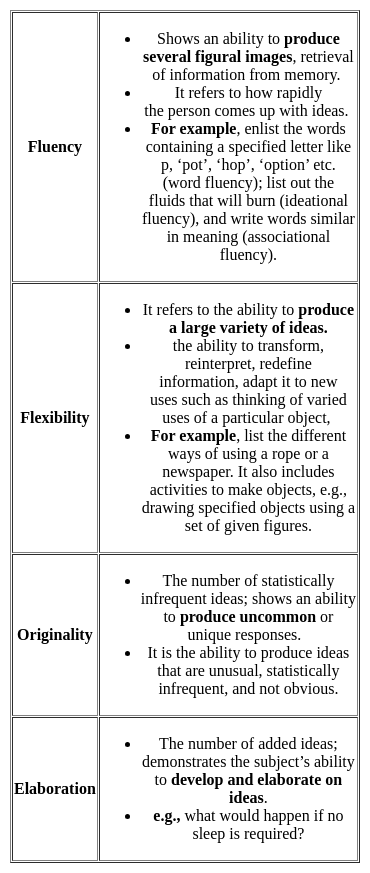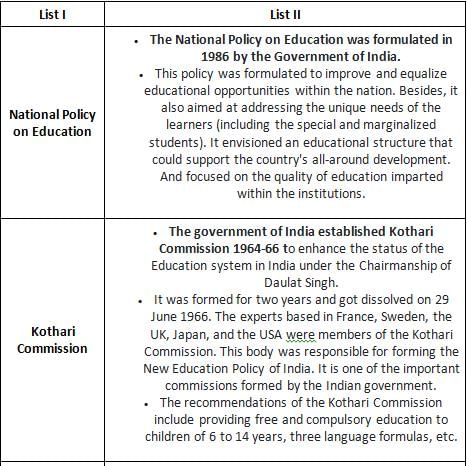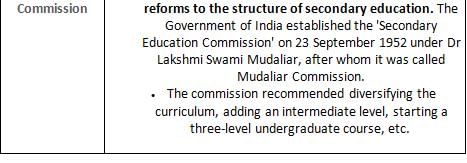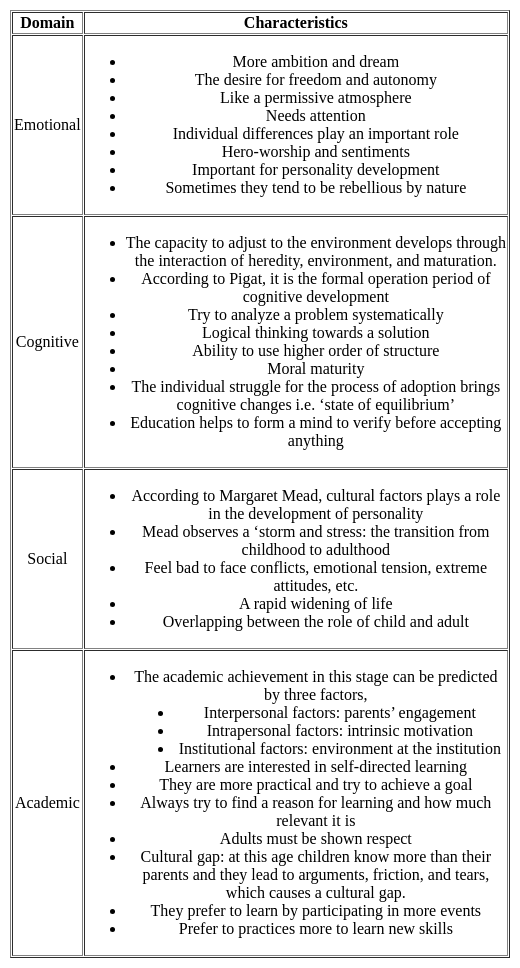UGC NET Paper 2 Education Mock Test - 2 - UGC NET MCQ
30 Questions MCQ Test UGC NET Mock Test Series 2025 - UGC NET Paper 2 Education Mock Test - 2
Which of the following are the essential features of a module?
(a) It is self-sufficient
(b) Attending contact classes
(c) Self-learning
(d) Self-evaluation
(e) Statements of learning outcomes
(f) Submission of project work
Choose your answer from the codes given below:
Which of the following statements is/are correct?
I. Educational Technology accepts education as both science and an art.
II. Educational Technology studies the impact of science and techniques on education process.
Fluency, Elaboration, Originality and Flexibility etc., are the factors associated with:
Match List - I with List - II and select the correct answer using the codes given below :
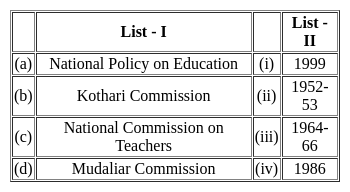
According to Kolb’s model, which of the following is/are there in four major types of learning styles
1. Diverging
2. Assimilating
3. Accommodating
4. Conceptualization
Fear of loud noises is an unlearned responses in a child. It is not surprising therefore, the lightning(thunder) should build up the same fear. It is an example for:
Which of the following emotional characteristics are of crucial significance in adolescent learning ?
In the following statements identify those which relate to 'Norm-Referenced Testing' (NRT). Select from the code to give your answer.
1) Covering a large domain of learning tasks with just a few items measuring specific tasks.
2) Emphasizing discrimination among individuals in terms of relative level of learning.
3) Focusing on a specified domain of learning tasks with a large number of items measuring specific tasks.
4) Interpretation requires a clearly defined group.
5) Interpretation requires a clearly defined achievement domain.
6) Emphasizing description of learning tasks which individuals can and cannot perform.
It is industrial rather than other types of economy which most enhances the regard for education, because
Assertion (A): Maya takes a contrary view to Brahman.
Reason (R): Maya creates an illusory world.
Which of the following set of statements best represents the nature and objective of teaching and learning ?
(a) Teaching is like selling and learning is like buying.
(b) Teaching is a social act while learning is a personal act.
(c) Teaching implies learning whereas learning does not imply teaching.
(d) Teaching is a kind of delivery of knowledge while learning is like receiving it.
(e) Teaching is an interaction and is triadic in nature whereas learning is an active engagement in a subject domain.
In new P.HD regulation, there have many changes to course work-Choose the correct options from below given-
A. Candidates were also required to finish this either in the first semester, or by the second semester
B. Awarded MPhil or had completed their MPhil were exempted from coursework.
C. Four credits assigned to courses on research methodology.
D. Candidates should qualified in research coursework.
Work in progress Portfolios are an effective tool for formative assessment because:
(a) They involve students in the process of assessment.
(b) They offer insights about the progress of individual students.
(c) They focus mainly in the presentation of the final product.
(d) They offer tangible evidence of student learning.
What is the name of process used by the educators to identify the learning disability?
The Ramamurti Review Committee recommended that admission to higher education must be
Characteristics of a good teaching-learning materials are:
I. They are attractive
II. They have utilitarian value
III. They should be conventional
Teaching by small steps and frequent short assignment techniques are useful for
1) Slow learners
2) Learning disabled
3) Educationally backward children
4) Children of all types of disabilities
Which of the following is not a factor affecting the infrastructure and resources of higher education institutions in India?
Which of the following indicators reflects the low quality and quantity of research output in India?
What is the most suitable title for the passage?
Who among the following propounded the concept of paradigm?
Till now, how many National Educational Policies have been designed?
Which of the following is not a form of virtual learning?
Which of the following laws/principles of learning of Thorndike anticipated the classical conditioning paradigm of Pavlov?
Peer group membership has high educational implications during
|
92 docs|125 tests
|



